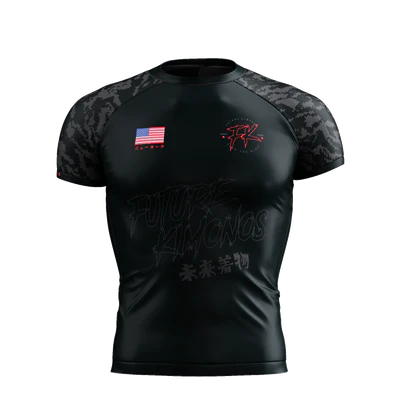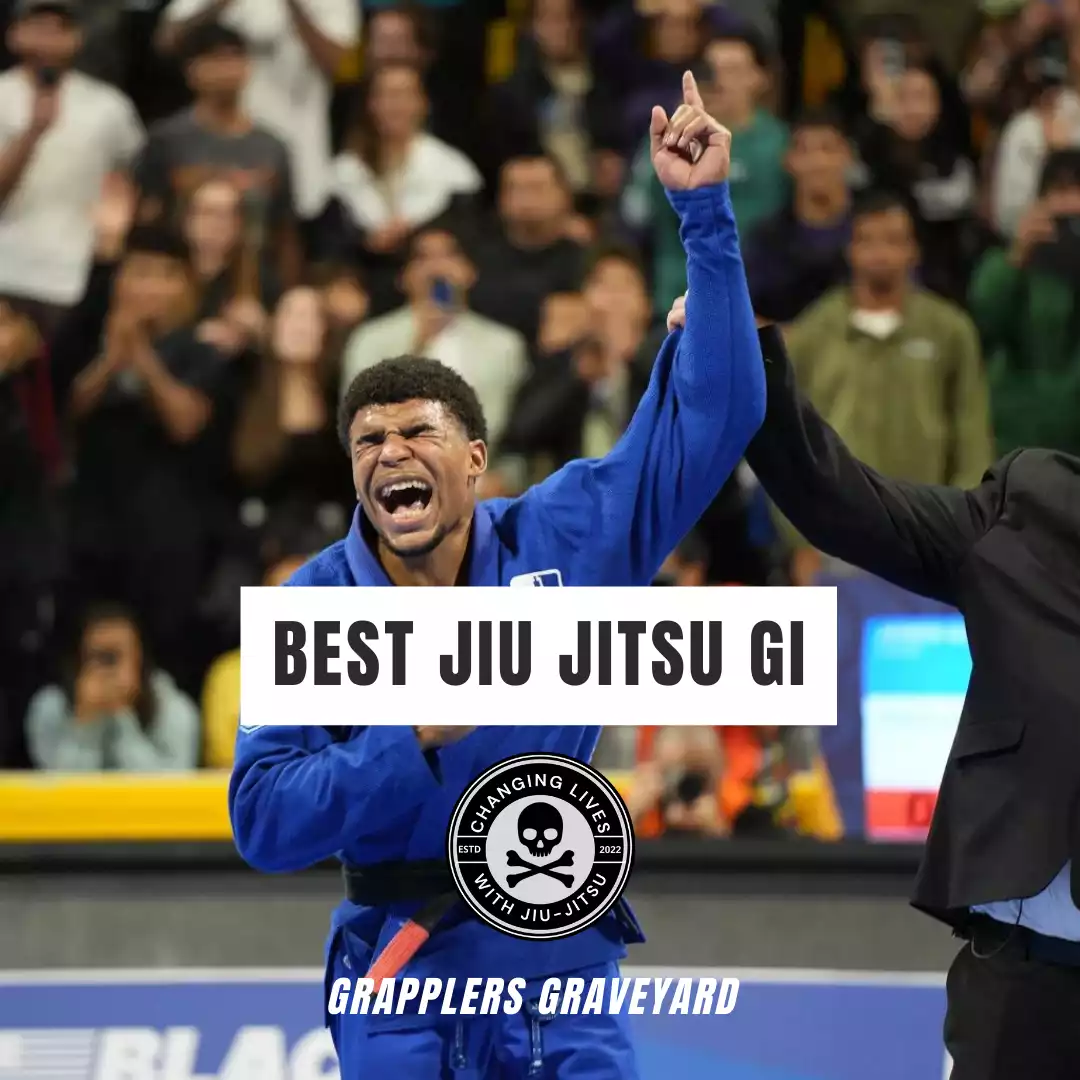
Cameron
Brazilian jiu-jitsu is the fastest-growing martial art form in the world right now. It is very likely that you or someone you know trains in the sport. Brazilian jiu-jitsu is a grappling-based martial art that focuses on leveraging an opponent’s body weight against themselves. It is very common for BJJ martial artists to be trained in two different styles, no-gi jiu-jitsu, and gi jiu-jitsu. These two styles of play result in two completely different ways of handling or attacking opponents. In this article, we will discuss the differences between the two styles of play that are common in jiu-jitsu today.

Nogi vs Gi Jiu-Jitsu
There are two ways to train in Brazilian Jiu-Jitsu. You can train or compete in either No-Gi or Gi-style jiu-jitsu. The Gi is a kimono uniform that most BJJ practitioners wear when they are competing. The style of no-gi jiu-jitsu has increasingly grown in popularity and is slowly taking over the attention of the BJJ community over the traditional way of competing in the Gi.
Everyone for the most part has a preference for the style they train and it is up to you to discover what yours is. There are some key differences between the two styles and both have their respective pros and cons.

Clothing
One of the biggest differences between training no-gi or gi style jiu-jitsu is the clothing you are wearing. When training in the gi you are wearing a kimono known as a gi, because of this there are many more styles of play that can be introduced.
From lapel chokes to guards the style of play just due to the clothing is drastically different. Usually, the gi you wear creates a ton of friction so it is much easier to lock in positions that are hard to slip right out of when compared to no-gi jiu-jitsu.
No-gi is what it is, it is jiiu-jitsu without the kimono. In this style of play you are usually wearing a rash guard shirt, some combat shorts without pockets, and maybe some spats for style points. Some people do no-gi without the rash guard but that is more of a preference thing.
Use code 'GRAPPLERSGRAVEYARD' for 15% off your entire order
- High Quality Material
- Comfortable and Fits Body Perfectly
- Grade-A Designs
Techniques
Another key difference between the two styles of play is the techniques that can be utilized in them. When we started to take no-gi more seriously we started to notice a lot of things that go well in the gi are much harder to execute without it.
It is not news that jiu-jitsu is a sweaty sport. Because of this fact slipping in and out of positions is much easier to accomplish when doing no-gi vs gi. Try locking in a heel hook when your entire rash guard is wet from sweat and your arm is drenched… it is nearly impossible in the moment.
When establishing grips in no-gi you are more likely to utilize the collar tie versus “getting grips”. Arm drags, takedowns and strong wrestling give you a significant edge when training no-gi jiu-jitsu.
Rules
When you compete in tournaments, the rule sets for gi vs no-gi style of play is completely different. You should take the time to educate yourself on the specific ruleset of the tournament you plan on competing in because ADCC rules are much different than IBJJF Gi rules.
For example, heel hooks are a move that is banned from IBJJF Gi Brazilian Jiu Jitsu Tournaments, but many no-gi BJJ events such as ADCC welcome the heel hook as a viable technique to use. The majority of the submissions that Gordon Ryan has these days are the heel hook!

Attacks and Defense
Offensive moves in the gi rely on grabbing onto the fabric of the gi. A gi helps fighters gain control of their opponent, set up takedowns, and put themselves in an advantageous position.
A position that is very commonly used in the gi would be the spider guard. The spider guard is an open guard that allows you to lock your opponent’s arms by using your legs and arms. Guards used in Gi BJJ, like the spider guard, really only work on people that concentrate on using the Gi. It would be extremely difficult to pull this guard position off without grips to establish a dominant position.
Just What You Need. We designed the Sanabul Essential Jiu-Jitsu Gi to set a high bar for what you can expect from a BJJ gi whether this is your first Jiu Jitsu gi or an addition to your current line up. Quality construction, clean design, and incredible value make this Brazilian Jiu Jitsu gi the #1 Best Seller in the industry
Pros and Cons of Gi BJJ
Pros
- Learning BJJ the way it was originally formed
- Helps develop strong defensive capabilities
- Some sweeps are exclusive to the Gi because of the grips that can be established
- Some submissions are exclusive to training in the Gi – many chokes
Cons
- Not very applicable in a self-defense situation
- Friction caused by the Gi could be used to compensate for bad or sloppy technique
Pros and Cons of No-Gi BJJ
Pros
- More applicable to real-world situations
- More applicable to MMA Training
- Getting good at no-gi will make to a better Offensive player
- Makes you more creative with submissions
Cons
- Very few gyms exclusively train no-gi
- Easy to slip in or out of a submission
Training Both Gi & No-Gi
Training in both no-gi and gi-style BJJ is important to build a well-rounded style of play. To rank up in BJJ you will need to show proficiency in a number of techniques and positions and training both styles of play will get you introduced to them more quickly.
Most schools across the United States these days offer both styles throughout the week. There has been a huge surge in the no-gi style of play because of ADCC, schools like 10th Planet, and top-tier athletes almost exclusively training in this style of play!
Whichever style you decide to learn and lean into, make sure to focus on being well-rounded. It is very common for people to lean more towards a specific style of play but mastering BJJ will take focus on developing in both Gi and No-Gi BJJ.

Which is More Effective for Self-Defense?
There are many opinions surrounding the legitimacy of BJJ as a form of self-defense in a street situation. 99% of the time, in these self-defense situations people will not be wearing a kimono and will more than likely have thinner clothing and for this reason, we would say that no-gi is probably a better choice strictly for self-defense.
Eddie Bravo, the founder of 10th Planet jiu-jitsu, believes that no-gi is more effective but others like ChewJitsu, a prominent Youber in the BJJ community, argue that a gi is essentially compromised of pants and a jacket, making the outfit more authentic.
It s crucial to understand that both of these play styles will be important for your growth in Brazilian Jiu-jitsu. Getting to a high level in this sport will take years of training in both styles and mastering techniques that are suitable for their styles of play. When you embrace learning from both styles of play you will find that many techniques are similar by nature or can be translated completely.







Fascinating post and blog. I found you via your comment on Stuart’s blog. I became more familiar with Jiu Jitsu via UFC and similar leagues but also when Jon Bones Jones began retweeting my tweets a long time ago. He did not tag me or anything; a friend saw my named quoted on Bones account and emailed me to let me know. Pretty neat. I then began learning more of him, his fighting style and various disciplines.
Keep up the great blogging work.
Ryan
Thank you for the support Ryan! Means the world!
Jiu Jitsu has been a saving Grace for me personally and have loved my experience training. Happy this could help
I love both. Never thought of friction to cause bad habits. Maybe offensively it does. Defensively, I feel like if I can escape in gi, then it’s a sure thing in no-gi. But I gotta say I prefer the slip-and-slide of no-gi. Also, less laundry. That’s always a plus 😛
the amount of laundry I do is ridiculous hahah